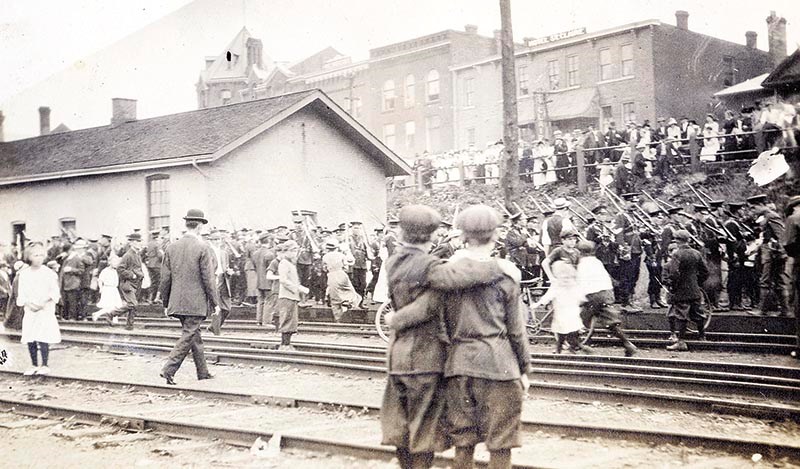Randy Evans
One hundred years ago Canada’s initial World War One recruiting drive was in earnest.
All volunteers, Sarnia’s earliest enlistees were routed into military groupings based in centers other than their hometown.
But this changed in late 1915 with the formation of the 70th Battalion and later the 149th Battalion – “Lambton’s Own. “
The 70th was led by Lieutenant- Colonel R.I. Towers of Sarnia and Major C.O. Fairbank of Petrolia. The City’s Captain W. J. Bradley headed the 149th. Both military units and their recruiting drives were amply assisted by constant exhortations in the city’s daily press. The boys now had local groupings in which they could enlist with their relatives and friends.
Comprised of men from all walks of life and heritage, the units were a significant source of civic pride and focus for Sarnia. War committees were formed, benevolent societies changed their focus to the war effort, money was raised, military bands were organized and Sarnia City Council took out life insurance policies for the families of those answering the call of King and Country.
The Battalions gave to the city local reference points around which to rally.
And so, after the enlistment paper work was completed, medical examinations cleared and rudimentary training undertaken, the Battalion’s contingents began to depart for war from Sarnia. The first to leave was the 70th on April 21st, 1916. The 149th was only months behind.
The Sarnia Observer headline read: “THE GALLANT 70th DEPARTS – Lieut. Col. Towers Fine Battalion Given Grand Send Off.”
The report continued: “Cheering patriotic strains were played … [The crowds] waved a hearty god-speed to the heroic hearts in khaki marching past.”
Those sentiments are mirrored in a photo of the 149th mustered at the Grand Trunk Railway station at Ferry Dock Hill for disembarkation.
Not long before, the men had been carrying out their peacetime lives. Now they were soldiers presenting in full military form - erect, drilled and patriotic - and the citizenry gathered to give the boys a full-throated send off.
It is extremely doubtful the young men so paraded knew what horror awaited them.
From Sarnia, the local boys would travel east to Halifax, where they embarked across the Atlantic in armed convoys aboard converted troop ships. After arriving in the Mother Country each unit received further military training at various locations, and were eventually based in southeast England.
The boys of Lambton were then a short distance from the killing fields of Flanders.
It was at this point the 70th and 149th each ceased to exist as a unified fighting unit. The Battalions would be broken up and its soldiers sent to various other regiments, whose early war casualties were so devastating that re-enforcements were required for their continued existence. The paper reported much angst over the breakup of the local units – better, it was said, for local camaraderie among the boys to make a more formidable fighting force.
It is doubtful this romantic notion of bonding had merit. What is not doubtful, however, is that by dispersing the Sarnia contingents the city was spared the devastation of a singular mass wipe out of the locals, which did occur to other locally-raised fighting units.
When the 70th paraded through London it was reported that among the cheering and flag-waving crowd “several women fainted.” Among all in the enthusiasm these ladies would prove the most prescient.
Within months of leaving home the spit and polish paraded at Ferry Dock Hill would be replaced by uniforms and Sarnia men caked with mud, defiled by poisonous gas and penetrated by shrapnel and bullet holes. Far too many remain in Flanders.
They were Sarnia’s best. Lest we forget.
Randy Evans is a retired lawyer and contributor to The City of Sarnia War Remembrance Project
